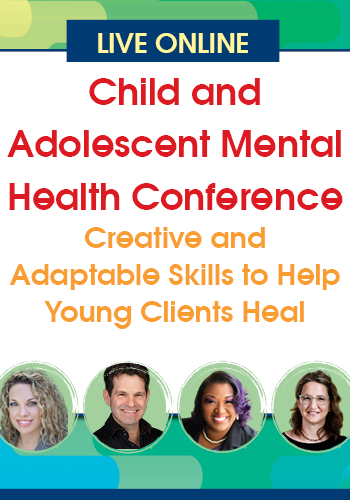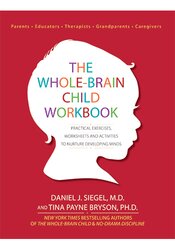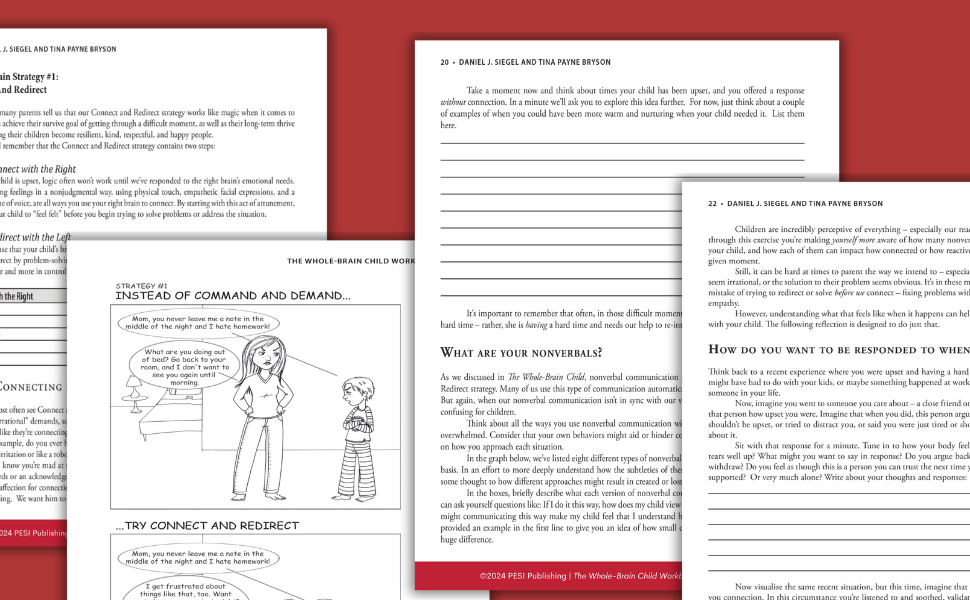Help Parents Connect and Redirect with their Child During Tough Moments
Free worksheets from The Whole-Brain Child Workbook

We've heard many parents tell us that our Connect and Redirect strategy works like magic when it comes to helping them achieve their survive goal of getting through a difficult moment, as well as their long-term thrive goal of helping their children become resilient, kind, respectful, and happy people.
You can help parents thrive with this whole-brain strategy if you remember the strategy contains two steps:
For example, do you ever hear yourself saying, “I can tell you’re really mad right now,” but you say it with tone of irritation or like a robot instead of warmth? Or have you caught yourself frowning, hands on hips, as you say, “I know you’re mad at me, but I told you to hurry three times!” Connection requires more than just kind words or an acknowledgement of an emotion. The overall feel of the interaction needs to be full of warmth and affection for connection to occur. Our goal is for him to “feel felt” and experience that we “get” what he’s feeling. We want him to know that we’re there for him.
Use these free worksheets straight from The Whole-Brain Child Workbook to help your clients learn more about this whole-brain strategy and connect with their child in the way the child needs to bring their brain back to a state of integration.
The more parents witness their child responding positively to the Connect and Redirect strategy, they more liekyl they will be to use it. And the more they practice using it, the more it will become one of their default responses when their child is having a hard time.
You can help parents thrive with this whole-brain strategy if you remember the strategy contains two steps:
Step 1: Connect with the Right
When your child is upset, logic often won’t work until we’ve responded to the right brain’s emotional needs. Acknowledging feelings in a nonjudgmental way, using physical touch, empathetic facial expressions, and a nurturing tone of voice, are all ways you use your right brain to connect. By starting with this act of attunement, you allow your child to “feel felt” before you begin trying to solve problems or address the situation.Step 2: Redirect with the Left
Once you sense that your child’s brain has settled enough that it can handle a left-brain, logical approach, you can then redirect by problem-solving with your child or making suggestions on what he can do now that he’s feeling calmer and more in control of himself.What Connecting Does Not Look Like
Where we most often see Connect and Redirect go awry is when parents become triggered by their child’s tone of voice or “irrational” demands, so the parents are less able to connect with real attunement. As a result, their words sound like they’re connecting, but the overall response doesn’t feel warm and nurturing.For example, do you ever hear yourself saying, “I can tell you’re really mad right now,” but you say it with tone of irritation or like a robot instead of warmth? Or have you caught yourself frowning, hands on hips, as you say, “I know you’re mad at me, but I told you to hurry three times!” Connection requires more than just kind words or an acknowledgement of an emotion. The overall feel of the interaction needs to be full of warmth and affection for connection to occur. Our goal is for him to “feel felt” and experience that we “get” what he’s feeling. We want him to know that we’re there for him.
Use these free worksheets straight from The Whole-Brain Child Workbook to help your clients learn more about this whole-brain strategy and connect with their child in the way the child needs to bring their brain back to a state of integration.
The more parents witness their child responding positively to the Connect and Redirect strategy, they more liekyl they will be to use it. And the more they practice using it, the more it will become one of their default responses when their child is having a hard time.
Live in Orlando, FL and Online on August 7-8, 2024:
Child and Adolescent Mental Health Conference
Child and Adolescent Mental Health Conference

It's crucial for us as clinicians and educators to stay informed, equipped, and connected! That’s why we’re inviting you to a groundbreaking 2-day Child and Adolescent Mental Health Conference, where we confront the unprecedented surge in youth mental health challenges head-on.
Live in Orlando, FL, and broadcast virtually, this is your chance to learn the latest strategies, techniques and interventions to grow your therapeutic toolbox. You’ll walk away with evidence-based strategies from today’s most popular modalities like Play Therapy, Internal Family Systems Therapy (IFS), Interpersonal Neurobiology, Polyvagal Theory, Attachment-Focused Play, and more - to support your young clients.
You'll learn from:
Live in Orlando, FL, and broadcast virtually, this is your chance to learn the latest strategies, techniques and interventions to grow your therapeutic toolbox. You’ll walk away with evidence-based strategies from today’s most popular modalities like Play Therapy, Internal Family Systems Therapy (IFS), Interpersonal Neurobiology, Polyvagal Theory, Attachment-Focused Play, and more - to support your young clients.
You'll learn from:
- Tina Payne Bryson, co-author with Dan Siegel of two New York Times bestsellers including The Whole-Brain Child, on the power of showing up for kids and rethinking challenging kid behavior beyond the diagnosis
- Carmen Jimenez-Pride, developer of Diversity in Play Therapy, Inc and certified IFS therapist, on practicing cultural humility and addressing protective systems with IFS therapy in the clinical setting
- Steve O’Brien, author of The Essential Guide to Treating Child and Adolescent Anxiety, on treatment tips for socially anxious youth and kids in the thick of post-divorce conflict
- Dafna Lender, author of the popular Integrative Attachment Family Therapy, on a powerful mental health intervention to reduce attachment trauma in families
The Whole-Brain Child Workbook

Daniel J. Siegel and Tina Payne Bryson speak to audiences all over the world about their immensely popular bestsellers, The Whole-Brain Child and No-Drama Discipline. The message Dan and Tina continually receive from their audiences, whether live or virtual, is that people are hungry for the opportunity to take the Whole-Brain ideas and go deeper with them. Thanks to this new workbook, they now can.
The Whole-Brain Child Workbook has a unique, interactive approach that allows readers not only to think more deeply about how the ideas fit their own parenting approach, but also develop specific and practical ways to implement the concepts—and bring them to life for themselves and for their children.
The Whole-Brain Child Workbook has a unique, interactive approach that allows readers not only to think more deeply about how the ideas fit their own parenting approach, but also develop specific and practical ways to implement the concepts—and bring them to life for themselves and for their children.
Meet the Experts:
Tina Payne Bryson, Ph.D., is the co-author (with Dan Siegel, M.D.) of two New York Times bestsellers: The Whole-Brain Child and No-Drama Discipline, as well as The Yes Brain. Dr. Bryson is also the co-author (with Dan Siegel, M.D.) of The Whole-Brain Child Workbook and No-Drama Discipline Workbook. She is the executive director of the Center for Connection in Pasadena, CA and a pediatric and adolescent psychotherapist. She keynotes conferences and conducts workshops for parents, educators, and clinicians all over the world. Dr. Bryson earned her Ph.D. from the University of Southern California, where her research explored attachment science, childrearing theory, and the emerging field of interpersonal neurobiology.
Learn more about her educational products, including upcoming live seminars, by clicking here.
Daniel J. Siegel, MD, is a graduate of Harvard Medical School and completed his postgraduate medical education at UCLA with training in pediatrics and child, adolescent, and adult psychiatry. He is currently a clinical professor of psychiatry at the UCLA School of Medicine, founding co-director of UCLA's Mindful Awareness Research Center, founding co-investigator at the UCLA Center for Culture, Brain and Development, and executive director of the Mindsight Institute, an educational center devoted to promoting insight, compassion, and empathy in individuals, families, institutions, and communities.
Learn more about his educational products, including upcoming live seminars, by clicking here.
Learn more about her educational products, including upcoming live seminars, by clicking here.
Daniel J. Siegel, MD, is a graduate of Harvard Medical School and completed his postgraduate medical education at UCLA with training in pediatrics and child, adolescent, and adult psychiatry. He is currently a clinical professor of psychiatry at the UCLA School of Medicine, founding co-director of UCLA's Mindful Awareness Research Center, founding co-investigator at the UCLA Center for Culture, Brain and Development, and executive director of the Mindsight Institute, an educational center devoted to promoting insight, compassion, and empathy in individuals, families, institutions, and communities.
Learn more about his educational products, including upcoming live seminars, by clicking here.




